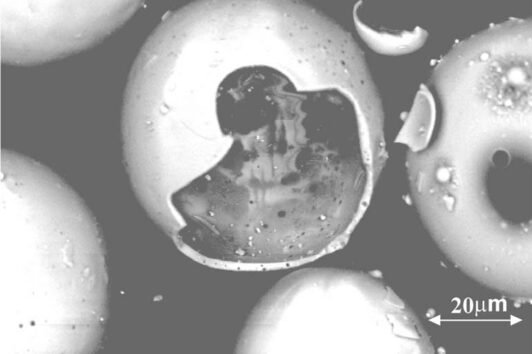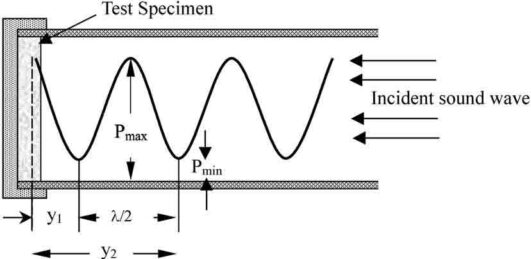
Fig. SEM micrograph of broken cenosphere showing its hollow characteristics and porous walls.
Noise is becoming an increasingly significant concern because of its adverse effects on the lives many people in urban societies and in rural areas. Noise arising from different sources such as vehicles, aircrafts, power plants and machinery is not only uncomfortable but also hazardous to health. These concerns have led to major developments in the field of sound absorbing materials. For homogenous and isotropic materials, acoustic performance is defined by a set of experimentally determined constants, namely: absorption coefficient, reflection coefficient, acoustic impedance, propagation constant and noise reduction coefficient (NRC).
Theoretical considerations
The absorption of sound results from the dissipation of the sound energy as heat. The dissipation mechanisms are mainly due to one of two phenomena. The first is the energy loss due to flexural vibrations in the specimen. The second is porosity effects, where energy is dissipated due to multiple reflections of sound waves within the voids in the structure. For most porous materials like synthetic foam and mineral wool with interconnected pores, incoming sound is reflected within the pores, causing them to vibrate and convert sound energy into heat.

Fig. Cross-section of impedance tube showing variation of pressure as a function of distance from the specimen.
The following conclusions were drawn from the study conducted by enriching the coating material with hollow ceramic cenospheres:
- The mass density decreases by 40% as the volume fraction of the cenospheres increases to 70%.
- Sound absorption increases with the addition of cenospheres up to 40% by volume.
Ask for the complete research